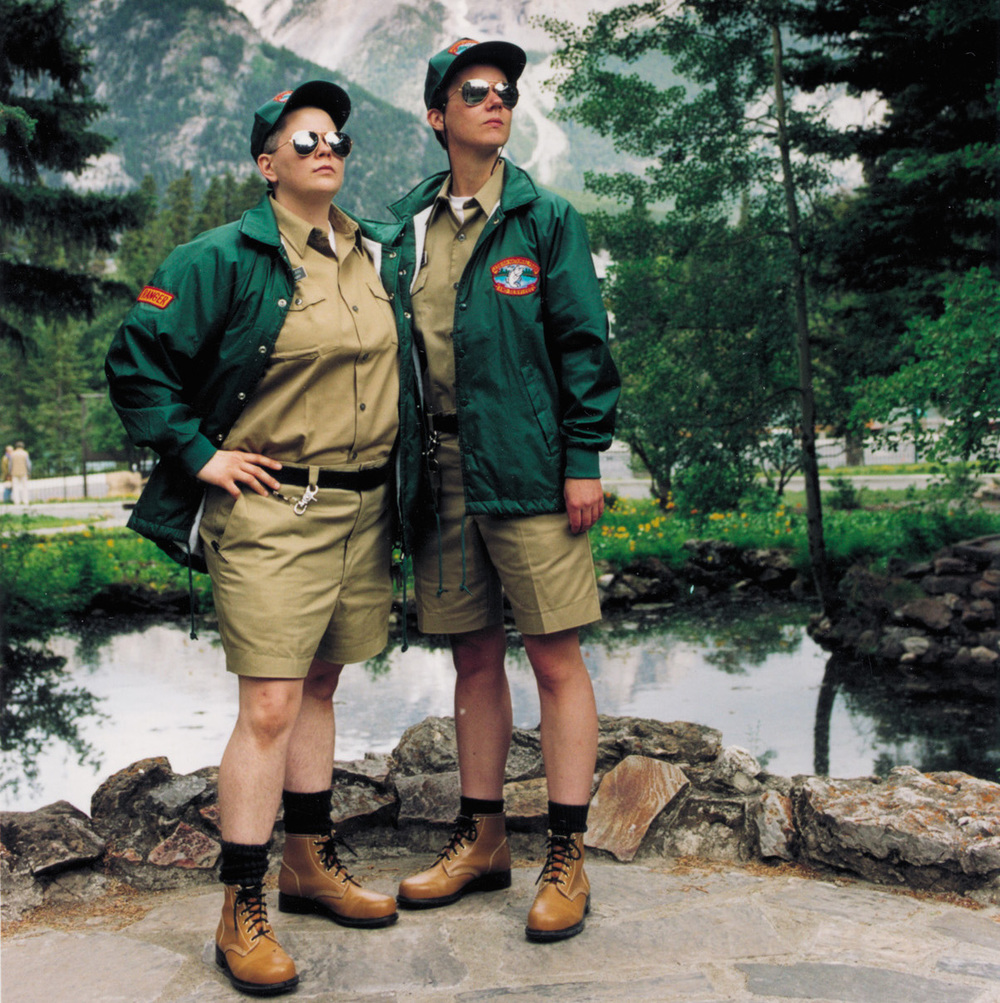THE FRONTIER IS HERE
Inverness County Centre for the Arts, July-August 2009.
Artists: Karen Azoulay, Shawna Dempsey and Lorri Millan, Red Armstrong, Maura Doyle, Onya Hogan-Finlay, Logan MacDonald and Ginger Brooks Takahashi, Hannah Jickling, Amos Latteier, Sandy Plotnikoff, Yvette Poorter, Steve Topping
Shawna Dempsey and Lorri Millan, Lesbian National Parks and Services: A Force of Nature, 2002 (production still, 23 minute video).
EXHIBITION ESSAY
There are few places like Inverness County, where a culture is as consciously defined by its surroundings. A history of survival by working the fields, the forest, and the sea creates an intimate and powerful familiarity with the landscape that has come to define Maritime cultural identity to the outside world. While the rugged landscape dominates as a theme in the marketing of regional identity to attract tourists, anyone who has spent time in Cape Breton knows that the many different people who live here lead lives that are vastly more interesting, wonderful, and strange than appear in the Doer’s & Dreamer Travel Guide, the provincial tourism directory.
By definition, the frontier is a boundary or a transitional space, where one territory borders on another, or faces a wilderness. It does not have to be physical or spatial, but can be a social, cultural, or intellectual frontier. This exhibition, The Frontier is Here, attempts to offer unfamiliar ways of experiencing things that we already known in some way. Contemporary artists from across Canada, and from as far away as Rotterdam, offer their own unconventional responses to the land. They use media not usually associated with representations of landscape, such as foil printing, plastic foam, video, SMS, audio recording, and ordinary household materials to challenge any tidy distinction between culture and nature. Artists in the exhibition complicate existing representations of nature that are repeated in tourist materials and postcards. With whimsy, innuendo, and humour - the works in the show offer alternative descriptions for the woods, mountains and streams - and provoke a radical reconsideration of what we consider to be natural. The works call attention to how we are represented in relation to the land by the outside world, and invite us to imagine more diverse and expansive ways of seeing ourselves.
— Amish Morrell, June 2009
